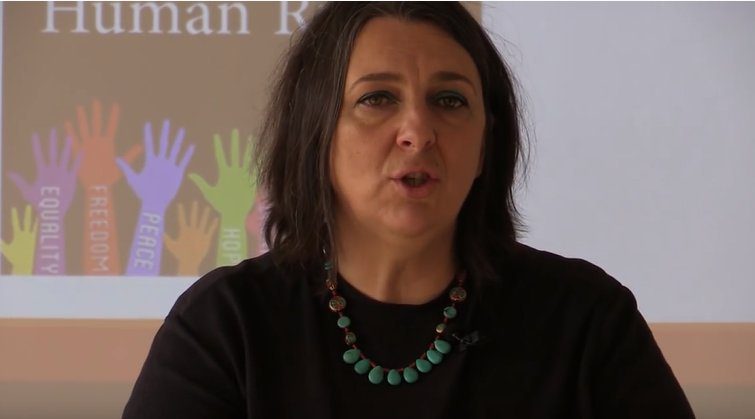
Mental Health takes many forms and affects us in many ways, and it doesn’t discriminate between race, religion, colour or gender. It can gradually creep up on us or hit us like a truck. No 2 people will suffer the same.

I have struggled with mental illness for half of my life now.
I remember aged 17, being in the bath after another argument with my parents, thinking how easy it would be to just stick my head under the water and end it all.
Every teenager has their struggles and will say that their parents just don’t understand them, but this was especially true of mine. Even now, 15 years later, I still look back on my teenage years as a very traumatic time.
From the age of 18, I spent 7 years in an emotionally abuse relationship. It started with the odd accusation here and there, until eventually, it became an every day occurrence. Every time my phone pinged, he demanded to know who it was. If the person wasn’t female, then clearly I must be cheating. When I was 25, we finally separated and I was left alone with a house and all the bills to pay for.
My counsellor recently told me a saying that they use in her sector: “The road is full of potholes”. This was very true of this point in my life, only they weren’t potholes, they were an abyss that I was circling and about to fall into at any moment.
I recall driving home from work one afternoon and all I wanted to do was drive my car flat out into a brick wall. I knew then that I needed help, so I made an appointment with my doctor and was prescribed antidepressants and signed off work for 2 weeks. I will never forget my manager’s reaction to that note: “you could always just rip it up and get on with it”. Words failed me and I hurriedly left the office and didn’t return for 2 weeks.
Things got a little better as the tablets started to take effect but it wasn’t just the feeling low, it was the insomnia, the numbness and the anxiety that can accompany Depression. I didn’t sleep properly in weeks and this only hampered my recovery.
Over the following months, I became stronger and began to like living on my own, it was then that I very unexpectedly met my husband.
Within a few months of meeting him, I had weaned myself off the antidepressants and I felt amazing. We were married 9 months after meeting and shortly after we were posted overseas with the military. Moving away was the fresh start I needed, we made some great friends and had our two children.
So how can I still feel sad?
A question I have asked myself so many times. After all; I have the perfect marriage to my best friend and soul mate and we have two healthy and wonderful children.
So what can I possibly have to feel depressed about?
The answer is nothing. But Depression doesn’t need a reason.
My latest battle with Depression really started last year. I knew I was struggling so I went to the doctors and requested to go back on antidepressants. But as the year went on, my mental health continued to decline and after the loss of a close friend to cancer last July, things just got worse.
The thing with Depression though is that it doesn’t just affect you, it affects everyone around you. I became less and less tolerant with my children and I withdrew from my husband- some days feeling so angry with him just for sitting down on the sofa next to me. I wanted to scream at him, even though he’d done nothing wrong.
My husband thought it was all his fault that I felt this way, like he wasn’t enough to make me happy anymore. But it wasn’t anything to do with him or our children. The truth is; I still don’t know what caused it.
It wasn’t just my home life that was suffering, but my job too. I struggled to complete every day tasks and made so many mistakes.
I’m very fortunate to have a boss who understands and helped me to get back on my feet. I now know that if I’m having a bad day, I only have to let her know and she will support me as much as she can. This makes all the difference to my struggle.
By September last year, things were back at their very worst. I didn’t have the suicidal thoughts that I’d had previously because of my children, but I knew I needed more help. The doctor had doubled the dose of my antidepressants but this was not helping, so I sought a counsellor. I found her listed on the Counselling Directory website and instantly liked her from her photo.
I’ve lost count of how many sessions I’ve had with her, but every single one has helped to get me back on track and feel better. We’ve been through the ‘nitty gritty stuff’- the abuse etc. but I have left every session feeling a million times lighter.
I don’t have regular weekly sessions anymore, I just go when I feel like I need a bit of support or help. For me now, it’s a bit like an MOT for my brain when I need it.
Mental Health takes many forms and affects us in many ways, and it doesn’t discriminate between race, religion, colour or gender. It can gradually creep up on us, or hit us like a truck. No 2 people will suffer the same.
I’ve been lucky to make many new friends since my eldest started school last year, and I have been very surprised to learn how many of those other parents have been effected by their own mental health- some just the once, for others it’s ongoing. And it always seems to be the parents who are (sometimes rather annoyingly!) always happy. It just proves that, despite appearances, you never know what personal battle someone is fighting.
Don’t ever be afraid to ask for help; more people understand than you realise.
Follow Us
Share Us



